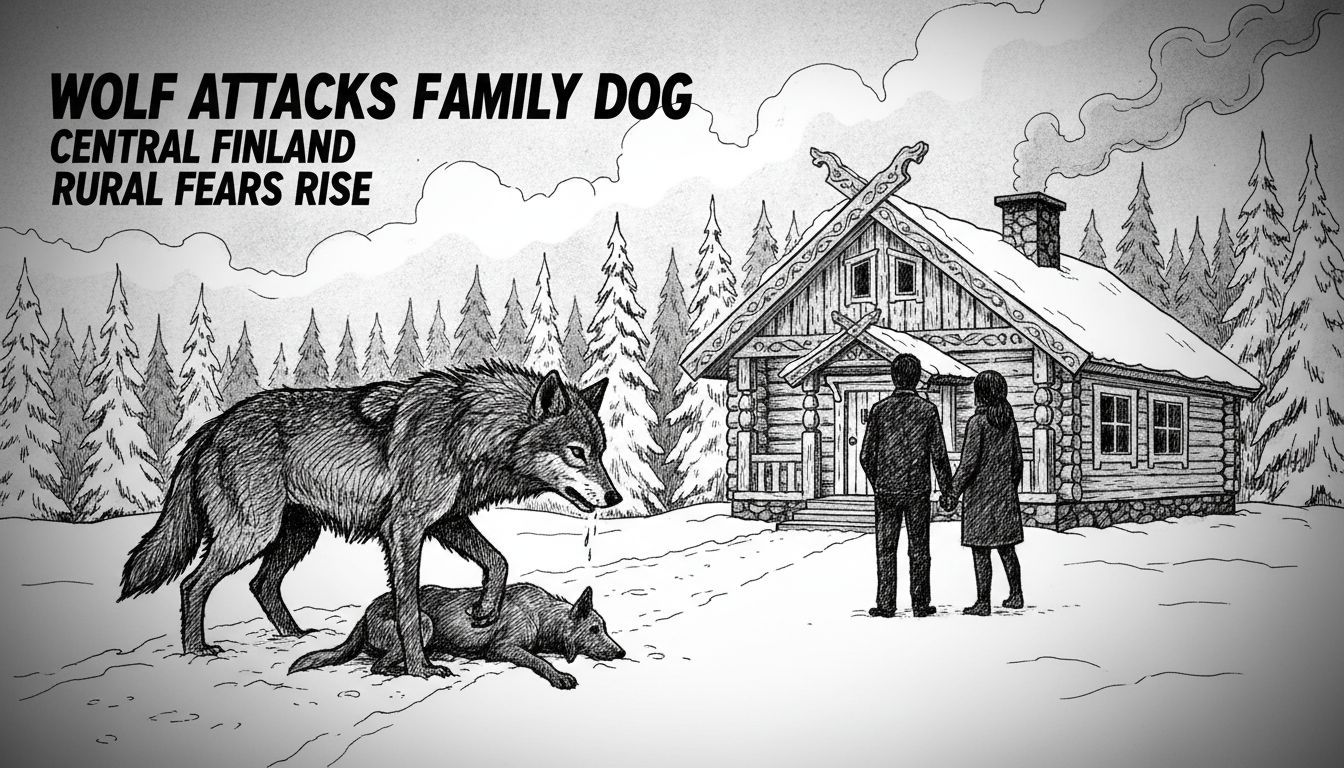A wolf snatched a Finnish Spitz directly from a family's doorstep in Virrat, Central Finland, marking another concerning predator incident in the region. The wolf had been tracking hare trails onto residential property before capturing the dog from outside the front door during evening hours. Wildlife official Tapio Luuri described the sequence of events in a hunting association bulletin, noting the animal dragged its prey approximately thirty meters before killing it. The wolf consumed its meal three hundred meters into nearby woodland, leaving behind only front paws, bones, and bloodstains according to the devastated owner.
DNA evidence collected from wolf tracks has been forwarded for species and individual identification purposes. Footprint patterns indicated the predator moved boldly through neighborhood yards while searching for food. Just one day prior to this incident, a large wolf was captured on wildlife camera in western Virrat, with previous sightings recorded during late winter. This represents the thirtieth reported wolf attack during the current hunting season according to official records.
Local authorities and police received immediate notification about the Virrat case as required by procedure. Rural residents express growing concern about predator proximity to residential areas, particularly following multiple recent sightings. Finland's wolf population remains protected under EU directives despite increasing human-wildlife conflicts in certain regions. The incident highlights ongoing tensions between conservation efforts and rural community safety concerns.
Finnish wildlife management balances European habitat protection requirements with practical local safety measures. Current regulations permit limited preventive hunting when wolves demonstrate repeated proximity to residential zones. The central Finland region has documented several similar incidents over recent seasons, prompting discussions about policy adjustments. Rural affairs committees continue monitoring the situation while evaluating potential regulatory refinements.
What does this pattern of incidents indicate about human-wildlife coexistence in modern Finland? The frequency of such encounters suggests either increasing wolf populations or changing animal behavior patterns. Conservationists emphasize habitat protection while rural residents seek practical safety assurances. This incident will likely fuel ongoing debates about predator management policies in parliamentary discussions. The situation requires careful balancing of ecological commitments and community protection needs across Finnish regions.

